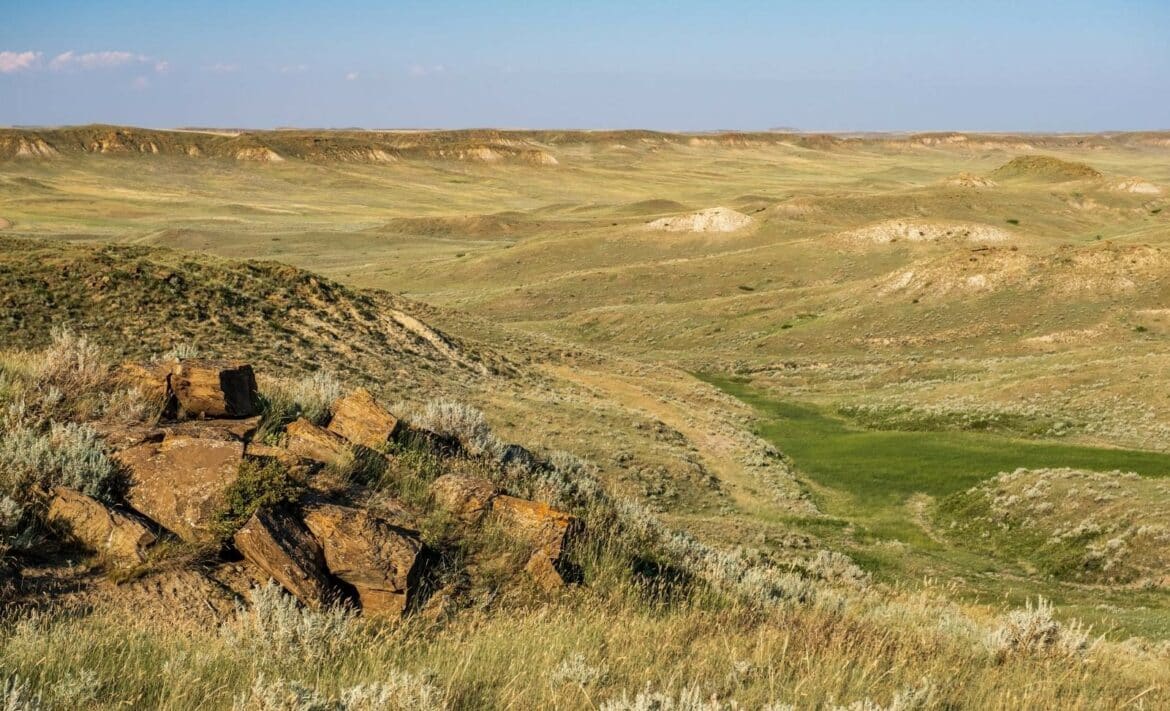The Bureau of Land Management (BLM) will invest $161 million from the Inflation Reduction Act in ecosystem restoration and resilience on the nation’s public lands. The work will focus on 21 “Restoration Landscapes” across 11 western states, with the goal of restoring wildlife habitat and clean water on public lands and strengthening communities and local economies.
These investments follow the release of the Department’s restoration framework to leverage investments in climate and conservation to achieve landscape-level outcomes across the nation. The Department is implementing more than $2 billion in investments to restore our nation’s lands and waters, which in turn is helping to meet the conservation goals set through the America the Beautiful initiative, commonly known as 30-by-30.
A lot included in this effort, so on the press call, Northern Ag Network asked specifically how this would impact ranchers who graze on public lands.
“It’ll affect our grazing permittees in that, they’re some of our most important partners for restoration across some of these landscapes,” responded Colorado BLM Director Doug Vilsack. “The reality is that we’re a multiple use agency and so when we are restoring a landscape, we are restoring it for our multiple users, and so, I think our grazing lessees will both benefit and be some fantastic partners.”
“For example, transitioning to wildlife-friendly fencing,” Vilsack continued. “Of course many of our permittees require fencing for their livestock, but at the same time there are ways that you can work on fencing to make sure that wildlife can pass over and under, and open open spaces during seasonal migration. Really our agricultural community will be most impacted because they will benefit and they are key partners of ours in a lot of these restoration landscapes.”
BLM Director Tracy Stone-Manning was asked how this announcement plays into the proposed public lands rule that was announced earlier this spring.
“Restoration has been a line of business for the Bureau for a very long time,” Stone-Manning answered. “The propsoed public lands rule puts sort a framework around that, puts policy into place on how to identify landscapes on which to work into the future. Also, creates a mechanism through conservation leasing to ensure that some of the projects that need to take root have the time to do that.”
Stone-Manning added that, “Although its not necessary to what we’re announcing today, what we’re announcing today is funding to get to the work today. So they’re parrallel and potentially one day may overlap, but at the moment we’re just excited to have funds to get to the ground.”
Five of the restoration landscapes are located in Montana and Wyoming with $46.9 million earmarked in spending on the projects.

“Our staff is excited about the opportunity this investment provides to make a meaningful impact on public lands in Montana” said Sonya Germann, the BLM Montana/Dakotas State Director. “This will allow us to work with a variety of important partners to conduct major restoration efforts on three large landscapes we know are important to the residents of the Treasure State.”
At the Blackfoot-Clark Fork Landscape (#3 on the map), BLM says that big game, grizzly bears, Canada lynx and bull trout habitat have all felt effects of former industrial logging and the growing pressures of climate change. The restoration efforts in the area will be focused in young to medium-age forests, decommissioning legacy roads, and repairing perennial streams.
In North Central Montana, the Hi-Line Sagebrush Anchor Restoration Landscape (#2 on map) is located in Valley, Phillips and Blaine Counties. The agency notes that the area contains some of the largest intact grasslands left in North America which supports grassland bird species, including priority habitat for greater sage-grouse and critical winter and migration habitat for elk, deer and pronghorn. Restoration efforts here are intended to improve mesic and woody draw habitats; increase native plant diversity and remove encroaching conifers and anthropogenic features that threaten sage-grouse survival.
The Missouri Headwaters Restoration in Landscape (#4) encompasses high-elevation mountain ranges, expansive sage-steppe and large, productive valleys. This unique ecosystem is home to grizzly bear, westslope cutthroat, Arctic grayling, pronghorn, Greater sage-grouse and whitebark pine. The Bureau notes that the sagebrush grasslands anchor ecological systems and support multi-generational family ranches intermixed with public land as well as support vital recreational economies. The investments in restoration in the landscape the agency says will ensure these systems support people and wildlife alike into the future.
In Wyoming, the LaBarge Restoration Landscape (#16), rests on significant collaboration and cross fence-line partnership. Here, people are working together to manage for wildlife habitat and migration corridors and conserving and restoring priority habitat for the greater sage-grouse. BLM investment will reinforce these partnerships and work to remove invasive species, control erosion and protect water sources.
Muddy Creek (#17), an important tributary of the Little Snake River, supports a rare community of native fish – Colorado River cutthroat, bluehead and flannelmouth suckers and roundtail chub. Flanked by important winter range and migratory corridors to the east, the landscape holds core sagebrush habitat. Restoration investments will include fuels reduction, riparian and wetland enhancement, fence conversion and erosion control, all aimed at restoring natural ecologic function in the headwaters of the Colorado River basin.
The BLM adds that efforts in these 21 restoration landscapes are intended to improve the health of public lands that are being significantly degraded by invasive species, unprecedented wildfire events, unregulated use, and climate change. With these investments, landscapes will be better able to provide clean water, habitat for fish and wildlife, opportunities for recreation, and will be more resilient to wildfire and drought.
###
BLM/Northern Ag Network


